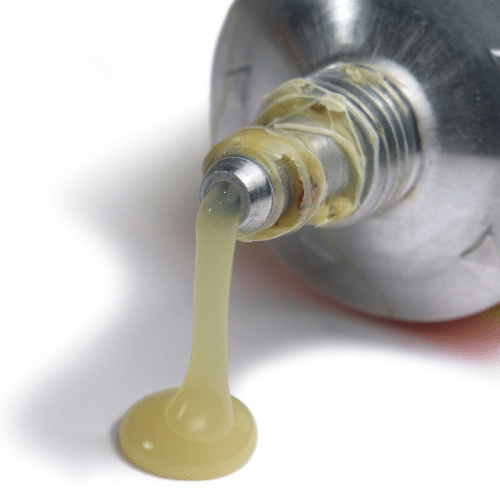What is your Favorite Glue?
When it comes to glue, there are so many choices on the market it can make your head spin. As a crafter, I have been experimenting with dozens of different types of glue. You always want to make sure you have the right type of glue for the project you are working on. When it comes to Papercrafts - not all glue is made the same. I have watched video after video of people using glues with abandon! When I tried the same glue myself, it was almost a disaster and that is not what any crafter wants. You want glue that will actually keep your project together even weeks and months later! So what is the best glue for paper crafts?
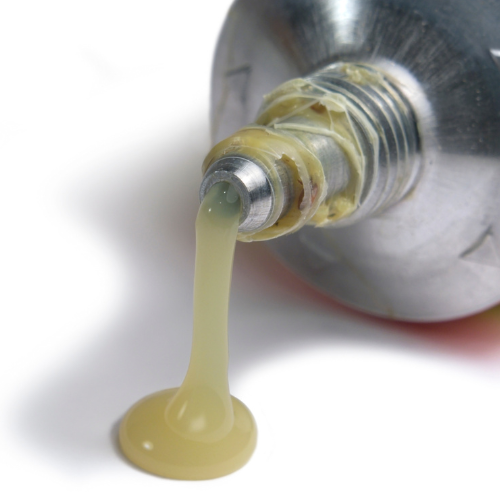
Getting Started with The Best Glue
Now the answer is not all that easy. The 5 best glue choices for paper crafts may actually surprise you. Each glue is chosen based on what type of paper you are going to use and what the project is all about. For example, is the project going to be exposed to heat and cold, or will it be simply sitting on a shelf or is it wall art? Each of these items really requires a different type of glue. For water-based glue, your project can be almost anything but not for layering multiple areas. I love playing around with all types of glue to see where it works best and being a paper crafter, I am mostly testing paper plus different materials and other surfaces where the paper will be used.
There is a white glue that kids use at school - this white glue is not necessarily the right glue for those intricate cuts but it will work well when it comes to most school projects. Even a glue stick will work most of the time. The problem with white glue - it is white and stays white. It is also not a long-lasting glue (yes, many times it will keep the project together). For most school work white glue is a good choice and the favorite glue because of its price and durability. Don't say no to white glue just yet, it has good uses a lot of the time. You will find plenty of white glue in Dollar Stores and the like.
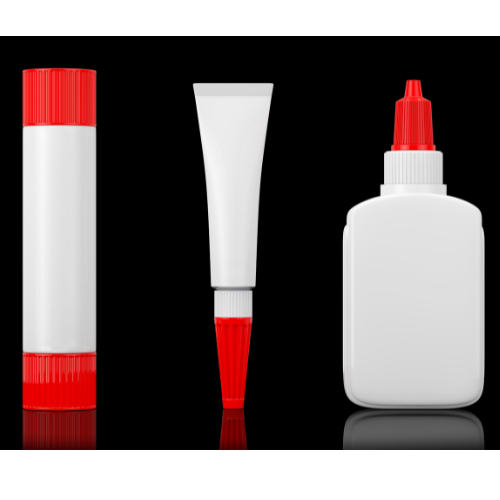
Our recommended supplies list: for kids at school
Elmer's Glue Stick
Elmer's Glue Bottle
Glue sticks and white glue that are non-toxic and if possible, acid-free. You want a glue where it can spill and easily be wiped up.
So let's think of other projects such as making journals such as junk journals or even binding projects. The glue you want here is an acid-free glue with a permanent bond. Making a journal is a paper project but it does require specialty glues and acid-free is ideal. Just think of making a book cover - gluing the outside cover design to the board. You want a glue that you can depend on and that will not come unstuck in a short period of time. Here I recommend a special PH acid-free ook binding glue or even one you make yourself with wheat gluten (yes, this is a traditional glue in Japanese book binding). I love making books and journals and have recently taken a few classes on binding types. One of them was the Japanese bookbinding class. Here I learned about wheat gluten as a binding agent. The unfortunate part of wheat gluten is that it is a food-grade glue. This means that mice and other critters will eventually want to eat your cover. So adding a few drops of bad-tasting things (especially things mice will not eat) to the glue mixture is the key to keeping all your journals safe when using this technique. Who knew?
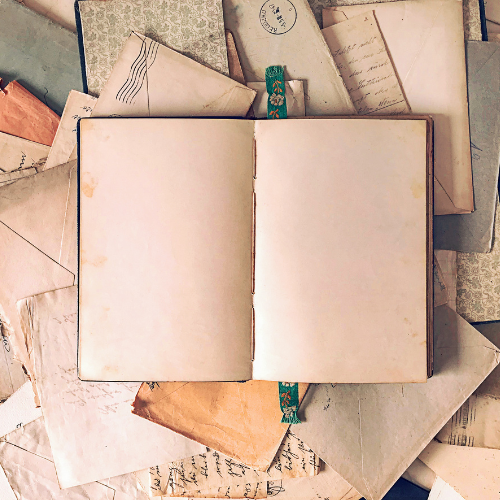
Strong Bond
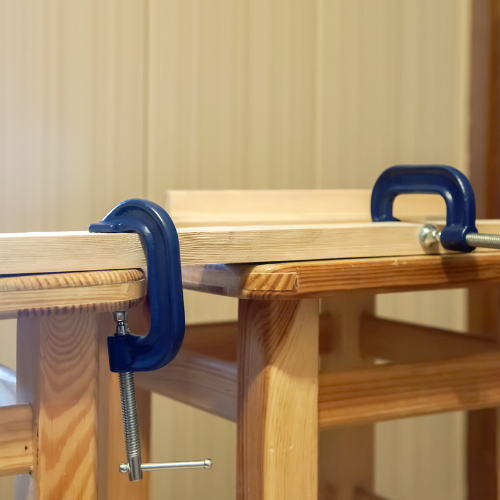
For projects that require corners to be held together with a strong bond, I recommend using Bearly Arts glue. It allows you to use very little, has a small bead of glue that comes out and it adheres almost immediately. The one issue here is the fact that you do not have much time to make adjustments to your pieces before it dries. I love this glue as it is permanent and it stays stuck over a very long period of time. It is great for card layers and it works well for embellishments instead of using sticker paper. Remember that a strong bond means a strong bond, the pieces you put together will really be stuck, and taking them apart will likely ruin your project. So be careful when using strong bond. Here you may think of epoxy or gorilla clue. This type of glue is actually perfect for making paper boxes when you want the corners to stay in place. I use the stron gbond for the corners but my favorite other glues for the rest of the project. You do not need strong bond everywhere. It is like using a hammer instead of an awl for the rest of the project.
For bigger projects like wreath making, you may want to consider using a hot glue gun. Hot glue is something that needs getting used to but once you master the technique, 3D projects will look amazing and remain stuck together. I use a hot glue gun for making mobiles and when I have two different types of materials that need to stick together. I have a funny story about using a hot glue gun for a wreath project I created. I went outside and gathered chestnuts (the horse chestnuts you can't eat) I set them to dry out for a week or so and then started to make a wreath of chestnuts - I have the video on YouTube if you want to watch it. The wreath turned out gorgeous and I absolutely loved it. I hung two of them outside and got lots of oohs and ahhs from admirers (I must admit I like this part). Well, it came time to put the wreaths away until the following year so I set them aside to warm up so I could pack them. When I picked one of them up, the chestnuts started falling off. I wondered why the hot glue gun material was not sticking like it should. The answer was not the glue but the fact I used Chestnuts that were not completely dried up and when they began to shrink, they shed their skin and my wreath was then a mess. I had to reglue them all back on when I thought it was safe and the chestnuts were actually dry. I learned a lesson here that it is not always the glue that is the issue, it can often be the material you are using that does not work well with the glue you have chosen.
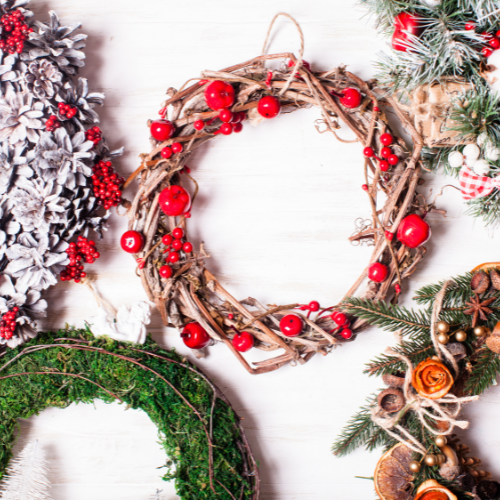
Large Projects
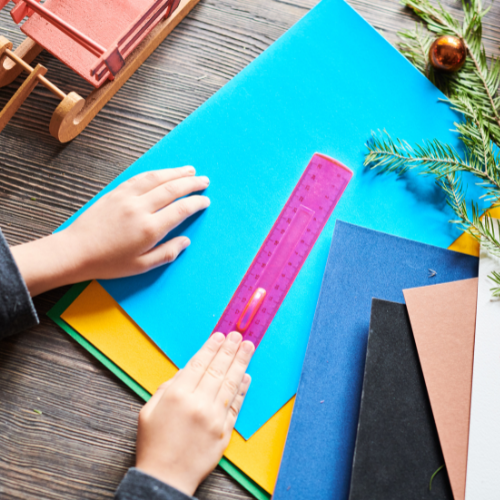
What about large projects or glue to be used in large areas? What would the best adhesive be for giant flowers, big wall decor, or even a multi-part wood project for the outdoors? The answer here is not that simple, as you want something for wood as a starter to endure high temperatures and even really low ones. This means a glue that will take a lot of abuse. For wood projects, I would not recommend using any craft glues at all. I would use glues that are meant for building porch decks or sealing the siding on a house. This way you know that the glue you choose will last longer. For wall decor that is an entirely different matter. Wall projects are not usually meant to be permanent. and that means a non-permanent glue is best. My wall projects usually use non-permanent vinyl. It makes it much easier to change up a design on the fly. If you permanently glue your wall decor in place, it will take a great amount of effort to remove it and will quite often damage your walls. Trust me on this one, I have done both and even though I thought I would not want to change up a particular design, I was so wrong, I changed the color decor of the room and needed to make changes to the wall decor. My choice then was to paint over the current design and get rough outlines showing or trying to peel off what I had placed there. I decided to peel the design and take off chunks of the drywall at the same time. Now I had to repair the wall and then put up my new design. I am now only using non-permanent after that experience.
I have one other favorite glue at the time of writing this article and that is made by Glitter Glue and it is called Designer Adhesive. It dries clear and is acid-free. This glue dries fairly quickly but gives you a little more time than a Bearly ARt glue to adjust the positioning of your project. I know you will love this one. It is not expensive and works like a dream. Because I love to work with paper, having the right kind of glue that I know works is crucial. After the discovery of Bearly Arts glues and now Glitter Glue Designer Glue, I find that other glues are not living up to what I need. Yes, there are times when I do use Aleene's tacky when I really need to have the ability to move stuff around before it all dries.
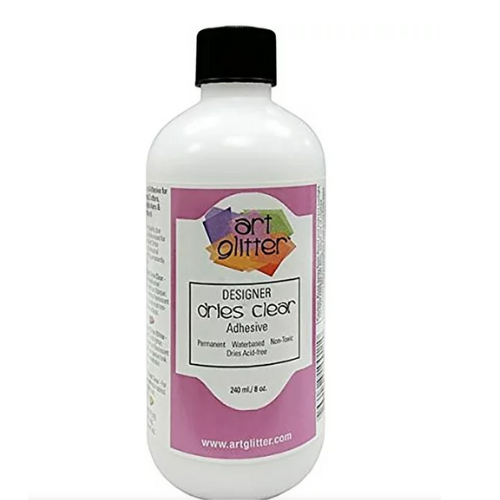
Is Mod Podge a Glue?
Speaking of drying objects, someone asked about using Mod Podge as glue. I have never used it as glue but certainly as a sealant. Mod Podge has a tremendous number of uses but as a glue for paper projects, I don't think this is the right choice. You would be better off using double-sided tape for these craft projects. Generally, you would want to glue the material in place, let it dry, and then apply Mod Podge to seal everything in place and give your project a nice finish. When I use Mod Podge I often think of making coasters with a printed design and then sealing them in place. This way I can use any type of coaster such as cork or small wooded pieces and not worry about water creating an issue with the finished project. You could also use a spray adhesive in place of regular glue for the design and then use Mod Podge to seal everything in place. My experience with spray glue has not been stellar but I do have some on hand so I can get to those difficult places when my gluing ability fails.
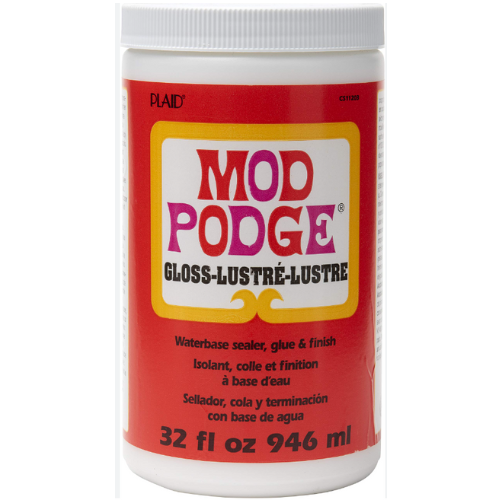
There are so many other adhesives on the market that work well at the time but later lose their stick.
Here is a list of types of paper glue you can use with mixed results:
Bearly Art Glue
Glue Pens
Glue Dots
Craft Adhesive
Runner Glues
Foam dots
Foam pads
Washi Tapes
Art Glitter glue
Aleene's Tacky Glue
Final Note
There are so many, that I am not going to list them all. When it comes to paper crafting my favorite is still Bearly Art precision craft glue followed by designer adhesive. Liquid adhesives or wet glue really work the best but putting on too much glue will ruin any project. You want easy application but you also want a glue that does not take forever to dry.
In Summary - my 5 favorite choices for glue are:
1. Bearly Arts glue
2. Art Glitter Designer Glue
3. Neutral PH Adhesive by Lineco
4. Hot Glue sticks
5. Zots Glue Dots
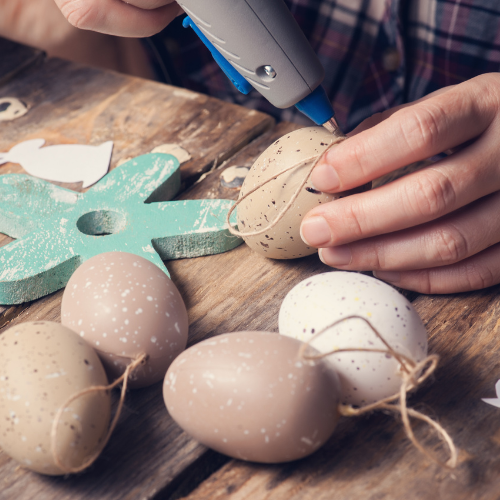
These are my staples and I have them on hand all the time. Just putting together a layered ornament or a heart-shaped box requires the right glue. When you have curves to deal with or simply corners to make a square, the type of glue you use will make a difference between a great-looking project and one that falls apart. The more projects you start making, the more you will need to know about the glues you use and the type of material you will use them on. Now I do not have a guide for all the types of glues but I do have my 5 recommendations and they have worked so well for me that I think they will work for you as well.
